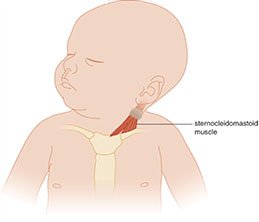Torticollis Treatment and Craniosacral Therapy in New York City
What is Torticollis?
Torticollis is a condition with a cranial, spinal and muscular component involvement. The side of shortened length always has a misaligned temporal bone, cervical spine Atlas (C1) and Axis (C2) fixation (rotation/flexion) and shortening of the sternocleidomastoid (SCM) muscle.
The SCM muscle is in a holding pattern, it is reflexively short as a result of the cranial bone called the temporal bone being out-of-alignment.
The neck itself almost always is also involved with the C1 and or C2 vertebrae of the cervical spine being rotated out of alignment, furthering the misalignment of the temporal bone and further shortening and tightening other muscles of the neck.
Treatment of Torticollis:
Gentle effective care of Craniosacral Therapy can help release muscles that are in a shortened state. The SCM muscle can relax with the movement of fluid into that area. As a reflex the neck relaxes, and the spine relaxes. Torticollis improves.

Misalignment as in Torticollis

Sternocleidomastoid Muscle

SCM muscle origin, insertion, action

Bones of the cranium, temporal bone
The primary and most significant issue is the cranial misalignment, which often also includes plagiocephaly (flat head syndrome).
Symptoms of Torticollis

Although signs and symptoms of torticollis can vary, many individuals display similar symptoms. Below are the most common signs and symptoms infants and young children show, which include:
- Inability to latch on for feeding
- Painful breastfeeding for mom
- Flat head on one side, Plagiocephaly
- Constantly leaning the head in only one direction
- Awkward chin position pointing sideways
- Neck muscle stiffness, neck looks longer on one side
- Muscle swelling in neck may be present after birth
Torticollis In Infants
During the birthing process the parietal bones fold over the frontal and occipital bones and between the temporal bones temporarily during vaginal delivery and passage into the world. However, during delivery, the baby’s head may not fully inflate, or inflate unevenly leaving the newborn with an undetected misaligned cranium or Plagiocephaly. Untreated, imperfect expression of health, such as torticollis, then often becomes evident immediately or later in life.
Torticollis In Toddlers, Children and Teenagers
If Torticollis has never before been evident there is a chance it is a recently developed symptom. Young people do also store unprocessed, unresolved emotion, negative experiences and physical / mental trauma. These incidents affect the nervous and energetic system of the body creating holding patterns that tighten specific groups of muscles causing the presentation of torticollis.
Undiagnosed Cranial Involvement
In Torticollis, the temporal bone on the shorter neck side is usually always involved. It is rotated out of its proper alignment causing the shortening of some neck muscles, specifically the Sternocleidomastoid (SCM) muscle.
Signs of Torticollis
The tell – tell signs to look for is head and facial asymmetry.
Ask yourself the following questions:
- Is one ear sticking out more than the other?
- Is the ear on one side higher than the other?
- Is the forehead uneven?
- Is one eye lower than the other?
- Does one eye look smaller than the other?
- Does the mouth look symmetrical?
- Does one side of the head look flatter than the other?
- Does the baby’s head / face look uneven?
- Is feeding time a difficult task?
- Does the baby have difficulty latching on during feeding?
If the answer is yes to any of the questions above, your child may have Torticollis.
Torticollis Treatment
Craniosacral Therapy treatment for Torticollis with Dr. Kaminsky can help reverse Torticollis when approached correctly with exact in-office sessions. With appropriate and skilled hands-on treatments and recommendations for home care, complete torticollis reversal is possible and attainable.
Parental home-care activities shown in the office by Dr. Kaminsky will add-on therapeutic value decreasing the needed in-office visits.
Other Difficulties
Feeding time can be a challenge for the mother. Either the baby cannot affectively latch on to the breast, and or bottle feeding seems labored. These are further indicators of cranial misalignment and hence torticollis.
During feeding if the baby is successful in latching on to the nipple, it is painful for the mother and often becomes emotionally and physically draining discouraging this natural process.
If you suspect your child of having torticollis or have been diagnosed by your pediatrician, there is no reason to wait. Left uncorrected, it may become a focal point of compensatory physical / physiological changes and adaptation throughout life. Less than optimal expression of health may happen.
Torticollis is correctable, treatable and manageable. Call Dr. Kaminsky and schedule a Telephone or In-Office consultation with your child.

